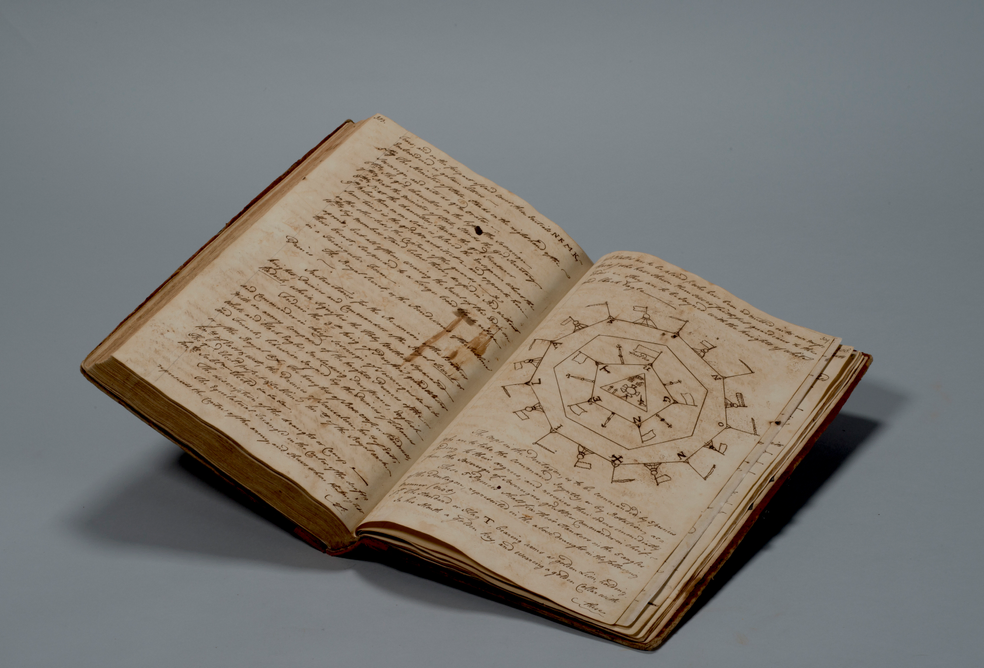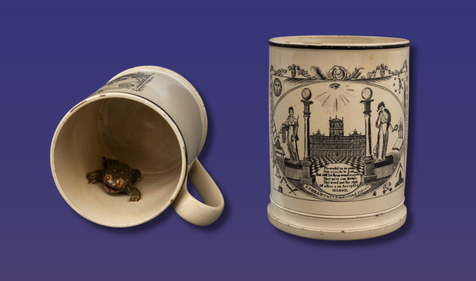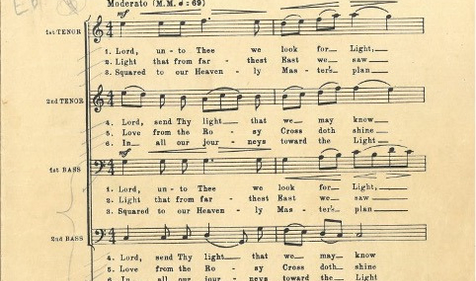For the past four years, our staff has been dedicated to restoring a seminal work of Masonic literature for all to read and enjoy. The 1783 Francken Manuscript is a “long lost” volume of Freemasonry, detailing the 4th through 25th degrees as they were performed in the 18th century.

Enriching our members’ understanding of the craft of Freemasonry has always been a goal of the Scottish Rite. For the past four years, Alan Foulds, Editor of The Northern Light, together with staff members of the Scottish Rite Masonic Museum & Library, particularly library director Jeff Croteau, worked to help create a facsimile and annotated transcription of a seminal work of Masonic ritual for all to enjoy.
The 1783 Francken Manuscript is a foundational volume of Scottish Rite Freemasonry, detailing the 4th through 25th degrees as they were written in the 18th century. For years, Masons and historians alike have been hoping for more access to this important Masonic book. As rightful owners of the work, the Scottish Rite Northern Masonic Jurisdiction decided to publish a sanctioned edition, complete with a photographic reproduction of the manuscript and a transcription of this Masonic masterpiece.
Henry Andrew Francken was born in either Holland or a Dutch Colony before moving to Jamaica in 1757 where he became a naturalized British subject. Somewhere around this time, Fracken met Stephen Morin who communicated the fourth through fourteenth degrees to him. By 1762, Francken was employed in government, holding positions as marshal and sergeant of the court of vice admiralty. In the succeeding years, Francken became deeply involved in Freemasonry, making trips as far as New York on Masonic business. In 1771, he transcribed the first dated copy of his manuscript. The 1783 copy owned by the Scottish Rite is the most complete and well known of these. It is one of only four known to exist.
Despite the age of the manuscript, the possession of the work by the SRNMJ is relatively new, in Masonic terms. Jeff Croteau, Director of Library and Archives explains,
“Perhaps most interesting to me was the provenance, or history of ownership of the manuscript. Many people who have heard of the 1783 Francken Manuscript presume that the Supreme Council has been in possession of it since its inception in 1813. In fact, it wasn’t until 1935 that the Supreme Council came to own the manuscript.”
Now, after more than 80 years of being cared for by the Supreme Council and the Scottish Rite Masonic Museum & Library, the manuscript has been meticulously transcribed and annotated to provide a point of reference and education for all Masons. The book provides an unprecedented look at early Masonic degree work, and readers may see clear similarities between the text and modern degrees. Croteau explains,
“Part of what made the publication of this book possible and interesting is how much it highlights both tradition and change within the Northern Masonic Jurisdiction. Francken’s rituals are the earliest surviving English-language versions of Scottish Rite rituals. Although the manuscript predates the founding of the Scottish Rite by nearly twenty years, rituals from the Masonic order disseminated by Francken were brought into the Scottish Rite degree system. So, on the one hand, if you want to look at the roots of the Scottish Rite, the Francken Manuscript is a wonderful deep-dive into that. As for change, NMJ rituals have been rearranged, replaced, and revised many, many times over its two centuries of existence. In fact, it is partially because the ritual has changed so much that this publication is even possible – this book does not represent current ritual, but gives readers a clear view of what they might have encountered nearly 250 years ago.”
While the Francken Manuscript transcription will allow readers to delve into detail, it should be noted that the complete work also has clarifying footnotes provided by Foulds, Croteau, and Aimee E. Newell, former Director of Collections for the Museum & Library. Foulds spoke about what he found most interesting about this newly published manuscript. He said, “The main difference is that there is a greater narrative arc to the rituals with a more clear connection to the first three degrees of Freemasonry. It’s like a novel, in that you can get caught up in the story.” Expanding on the same text concept, Croteau adds that the degrees act as, “a continuation of the Blue Lodge degrees and almost function as a series of sequels that pick up the story at the end of the Master Mason degree and run with it.” While Masons certainly will have the chance to get wrapped-up in the story, it shouldn’t be lost on them the scale of the project executed to make such easy reading possible.
To ensure Masons can truly read and enjoy the work, the physical layout and supporting texts were carefully planned. The 316-page manuscript, printed here as a full-color facsimile, is accompanied by a printed transcription of the text on each facing page. With three introductory essays, the published manuscript runs to 720 pages. Additionally, footnotes allow the reader to not only cross-reference with other texts for understanding, but also to pursue specific meanings to deeper extents. The volume itself is impeccably designed, making it an heirloom-quality piece for any Mason’s library.
However, creating the Francken Manuscript was not just a matter of technical talent and time. It required a vision and desire from the top to be made a priority. For that, we have outgoing Sovereign Grand Commander John Wm.McNaughton to thank. His clear understanding of the work’s importance, along with steadfast support during its creation, made this landmark effort feasible.
The 1783 Francken Manuscript offers a unique look into the origins of the Scottish Rite. We are deeply fortunate to have resources that allow us to create such a beautiful publication that will enhance our understanding of Masonic ritual. Whether one is a new member of the Rite, or a member of the Supreme Council itself, a chance to compare and contrast our most cherished rituals to the one’s of our forefathers is a rare opportunity.
Efforts such as the publication of The 1783 Francken Manuscript would be impossible without the support of the Scottish Rite membership. As a fraternity dedicated to both our members and the Craft, we are proud to direct effort into illustrating the rich history of our Brethren. We hope that any and all members will consider owning this crucial piece of Scottish Rite history, and use it to grow into an even more knowledgeable and dedicated Mason.
You can purchase your copy here.
Related Stories
Discover additional Scottish Rite blogs and news on this topic.



